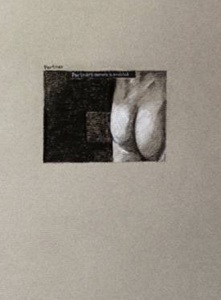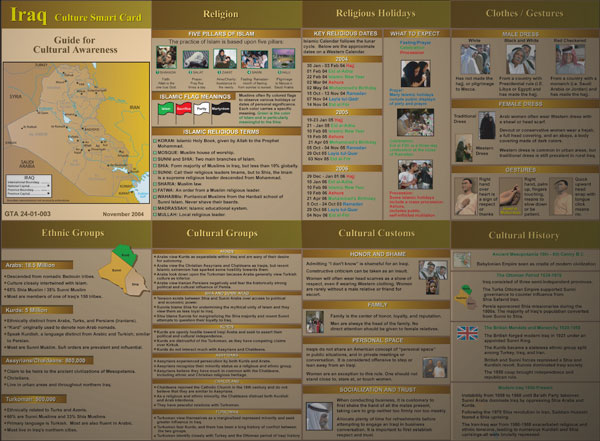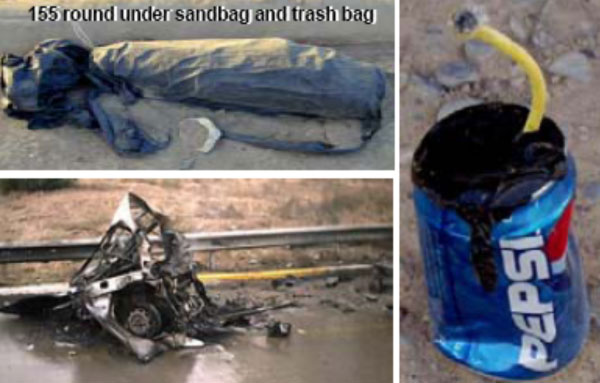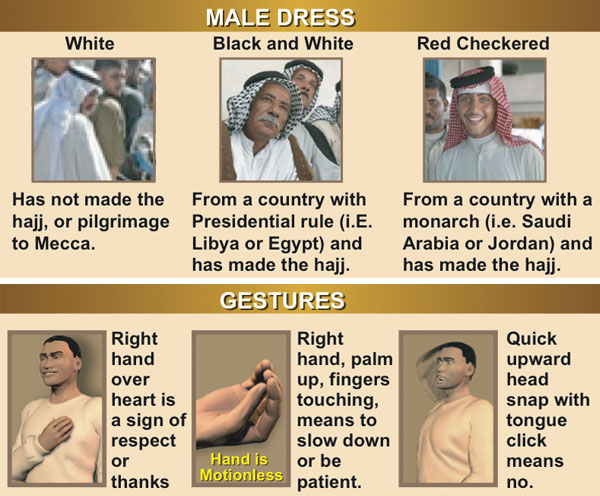The Latest from Boing Boing |  |
- Steampunk pirate ship needs your help
- Makers tile-game, the physical object edition
- Experiments in Torture: Physicians group alleges US conducted illegal research on detainees
- Castle fireplace mantel with drawbridge
- Art show: Gignac's "Nudes of Chatroulette" and Held's "Facebook Portraits"
- John Alexander: Paranormal Colonel
- How the military improved its language education
- HOWTO make a t-shirt printer
| Steampunk pirate ship needs your help Posted: 07 Jun 2010 04:44 AM PDT Andy sez, "For the past few years I have been building a steampunk pirate ship. We plan to have the ship done by Burning Man 2010. So far all the fundraising has been through donations and the sales of small LED sculptures called 'Tripod Sentinels'. We just finished a video describing the Tripods and the Ship." I've got one of Andy's wicked Tripod Sentinels right here, and it is truly a thing of beauty. Can't wait to see what the finished pirate ship looks like. Pirate Ships and Tripods (Thanks, Andy!) |
| Makers tile-game, the physical object edition Posted: 06 Jun 2010 10:21 PM PDT Last year, my novel Makers was published and syndicated free as a series of 81 blog-posts on Tor.com. Tor had the insanely creative people at Idiots' Books produce 81 interlocking, tesselating illustrations, one for each installment, and made a sweet little Flash toy that let you play with making your own meta-illo by moving the tiles around. Now, Idiots Books have released a limited edition set of physical cards that let you play the tile-game on your living room floor. I handed these out to folks on the For the Win tour, to great reactions. They're $12, and you can get them now. |
| Experiments in Torture: Physicians group alleges US conducted illegal research on detainees Posted: 06 Jun 2010 10:53 PM PDT  (Illustration: Rob Beschizza) Physicians for Human Rights (PHR) today released evidence it says indicates that the Bush administration conducted "illegal and unethical human experimentation and research" on detainees' response to torture while in CIA custody after 9/11. The group says such illegal activity would violate the Nuremburg Code, and could open the door to prosecutions. Their report is based on publicly available documents, and explores the participation of medical professionals in the CIA's "enhanced interrogation program." Download the full report at phrtorturepapers.org. Boing Boing spoke with the lead medical author of the report, Dr. Scott Allen, who is co-director of the Center For Prisoner Health and Human Rights at Brown University, and Medical Advisor to PHR.
Boing Boing: The first thing that came to mind as I read this report is that we're really talking about treating a vulnerable population—prisoners, war detainees—like lab rats. PHR: Correct. I am a former prison doctor and have conducted some research in prisons. I speak from direct experience in understanding what is allowable, and why there is a rigorous regime of human subject protections, especially for vulnerable subject populations. Boing Boing: What is the significance of the report you and your colleagues are releasing today? PHR: This is the first report to describe evidence that the CIA interrogation program not only involved torture, but it also involved human experimentation. That experimentation is related to the role of the "medical monitors," the doctors and psychologists who are directed by policy to monitor torture techniques. As a framing exercise: if you are an M.D. who is tasked with keeping torture safe, you have a practical problem. Set aside the ethical problem for a moment. How do you know how to do it? We were pretty thorough in thinking through it: we scoured the literature and found what experience was on the scientific record about the effects of these techniques. There's one body of evidence out there from torture survivors, which is in our prior report, "Leave No Marks." Everything in that report points to the understanding that this cannot be made safe. It is all very dangerous, and it's designed to harm, so it's ridiculous to think you can make it safe. The other body of evidence was the experience of investigators who worked with soldiers. In that program they did limited application of these techniques on volunteer subjects. The mock interrogations never went beyond 2 or 3 days, the waterboarding when it happened was limited to 1 or 2 short exposures, and in a technique that was dramatically different than what was applied to detainees in the black sites. No one really understands the long or short term effects of these techniques. So, in order to do the job the medical monitors were given to do, it left them two choices, both of which were awful: One, they could just wing it. You're talking about techniques that carry high risks of PTSD, but also high risks of physical injury and death (we know that there is public evidence that at least 4, maybe as many as 8 detainee deaths are related to these techniques)—you don't want to wing it. So I think it's certainly possible that while they weren't eagerly looking forward to setting up research they might have been backed into this by saying, let's take notes. That citation we note of Appendix F in the CIA 2004 Inspector General's report, the one that describes the directives to doctors, says, 'Take these notes in a very meticulous way about how detainees respond to waterboarding so we can better inform our procedures in future.' That's describing the framework of a research protocol.
PHR: I don't have expertise in this area. But efficacy of these techniques is irrelevant to the legal and moral issues at hand. If they were unethical for medical professionals to participate, and if they were unethical as legal techniques, whether they worked or not is irrelevant. We didn't try to speculate in this report on that particular question of effectiveness. But even if that was the reason, to say, 'We just want to know if what we're doing works better than rapport-building,' it still crosses the line if they did what it appears they did. It would cross the line into research, and human subject protections should kick in. They should have gone before a human subject review board, and protections should have been put in place. And mind you, we say that knowing that it never would have been approved. It never would have passed muster.
Boing Boing: Is pain something that we understand well enough that it is possible to create objective thresholds and call one side of the line 'torture' and the other side 'not torture'?
Boing Boing: Does pain correlate with physical or mental damage in most people? PHR: Again there is variability. Related to the concept of pain is the risk of the body's response. Even though we tend to separate psychology and psychiatry from neurology and the rest of medicine, they are related in a physical process. There's response of hormone levels to stress and pain that are real physical responses. And there's variability in those as well. And then, on top of that, even for those responses there is variability in who's going to go on to develop PTSD, alcoholism, anxiety, suicidality, uncontrollable anger, all the consequences of trauma we're aware of. In other words, the medical profession is not there yet. We know what risks are and who is at risk. But what the lawyers wanted the doctors to do is be really exact about when the line is crossed. They should have been told, 'Sorry, it can't be done. The risk is very high for pain and injury that would cross the legal threshold, and therefore these techniques cannot be used.' That would have been the correct answer based on the science.
Boing Boing: Sleep deprivation is another widely used technique according to this report, and all of the other publicly available documents on torture. How does sleep deprivation affect the brain in terms of our ability to remember and think logically? Why would interrogators believe that sleep deprivation yields accurate confessions or information, when it has a tendency to make people hallucinate?
We stuck entirely with publicly available government documents describing this program. They are heavily redacted. Many pages are mostly blacked out, and multiple pages in a row are entirely blacked out. If we found evidence of a crime in reviewing the sanitized record, someone who has access to the full record needs to investigate this.
Boing Boing: How would you respond to questions about whether you can call these actions 'experimentation' if they don't follow the scientific method? Some who support the use of 'enhanced interrogation' techniques might argue that you can't call this medical experimentation if it doesn't follow standard procedure.
We believe it's like alchemy: The client—the US government—may have wanted these scientists to wave a wand and turn an ordinary object into gold. And the scientist who was asked may have believed that this was possible. But it's not. We say that the idea of trying to make torture (or at the very least, a technique designed to create acute, severe, uncontrollable stress) 'safe' is a fool's errand. It's junk science. Bad science does not give you a pass.
All I can say is that we have done all we can do as citizens, as a small nonprofit. We have said that we are reporting evidence of a crime. What the authorities do with that, they will own. # # # Read the Physicians for Human Rights "Experiments in Torture" report in full at phrtorturepapers.org.
|
| Castle fireplace mantel with drawbridge Posted: 06 Jun 2010 09:17 PM PDT ![Architectural Collectibles Garden Decorative Art Furniture Rare Antiques Classic Cars Fountains Paintings Louis Icart Jewelry American Victorian French Red Baron Images Fa10256-[1024X768]](http://www.boingboing.net/images/_architectural_collectibles_garden_decorative_art_furniture_rare_antiques_classic_cars_fountains_paintings_louis_icart_jewelry_american_victorian_french_red_baron_images_FA10256-%5B1024x768%5D.jpg) If the ultimate Dungeons and Dragons room that Cory blogged about a few months ago had a fireplace, this antique would be the mantel. According to auctioneer Red Baron Antiques, it's a "finely carved detailed oak mantel in the form of a Chateau with mirrors, windows that open to storage and a drawbridge. 7.6'H x 6.1'W" (Thanks, Michael-Anne Rauback!) If the ultimate Dungeons and Dragons room that Cory blogged about a few months ago had a fireplace, this antique would be the mantel. According to auctioneer Red Baron Antiques, it's a "finely carved detailed oak mantel in the form of a Chateau with mirrors, windows that open to storage and a drawbridge. 7.6'H x 6.1'W" (Thanks, Michael-Anne Rauback!) |
| Art show: Gignac's "Nudes of Chatroulette" and Held's "Facebook Portraits" Posted: 06 Jun 2010 09:24 AM PDT   Justin Gignac created a series of charcoal drawings titled "Nudes of Chatroulette." I'm sure you get the idea. Gignac will be showing the work at The Art of Social Media exhibition on Tuesday, June 8, as part of Internet Week New York. Also hanging will be Matt Held's Facebook Portraits. (Above left, Held's "Laura"; right, Gignac's "Rear Without Hair") "The Art of Social Media" |
| John Alexander: Paranormal Colonel Posted: 06 Jun 2010 10:33 AM PDT  Meet US Army Colonel John Alexander, a former Green Beret in Vietnam, world-renowned expert in non-lethal weapons technology, and explorer of fringe science and paranormal possibilities. In 1980, Alexander contributed an article, titled "The New Mental Battlefield," to the Army's Military Review, arguing that remote viewing and other psychic phenomena could be militarized. During his military career and after, Alexander has had his hand in research on remote viewing, UFOs, near-death experiences, zero-point energy, and a variety of other curious matters. To some conspiracy theorists and self-proclaimed victims of mind control, he is Darth Vader. I first interviewed Alexander in 1994 for my Wired column "Reality Check" and found him delightful. (The online archive is here, but a chunk of the article is missing.) At the time, Alexander was head of the nonlethal weaponry program at Los Alamos National Laboratory. I've followed Alexander since, and was delighted to read about him in Jon Ronson's fun book The Men Who Stare At Goats. (For the record though, Alexander told me that the book is riddled with factual errors. For example, he says that it wasn't staring that killed the goat but rather a karate chop administered earlier that day.) Science writer Jim Schnabel, author of the excellent book "Remote Viewers: The Secret History of America's Psychic Spies," recently interviewed Alexander for Fortean Times. From FT: JS: I remember that you helped organise some "PK parties" in the DC area, with Boeing engineer Jack Houck, who had popularised these events on the West Coast. Apparently some high-ranking government officials attended those PK parties in the early 1980s, including John McMahon from the CIA, who somehow bent a spoon."Paranormal Soldier: John Alexander" |
| How the military improved its language education Posted: 06 Jun 2010 08:52 AM PDT  We may ask why the US sends troops abroad, but the fact is that we do send large numbers into a region about which they have little knowledge and almost no cultural connection. We then ask them to interact safely and efficiently with military and civilian natives. These interactions require varying levels of linguistic, cultural, and interpersonal background. As a foreign language educator, I am fascinated by the evolution of the training materials given to US soldiers and how cultural visual knowledge plays and increasingly important role. Over the past seven years, the military has noticeably changed how it trains soldiers for these vital kinds of cross-cultural interactions. These "changes in visuality" allow an exemplary look at how visual & cultural literacy has seriously impacted language and cultural training.
The first way instructors train is to rely on a simple visual clue for meaning. This is the equivalent of simple translations. The approach image = word = meaning is effective when it comes to teaching soldiers basic life saving skills in the field while trying to increase their visual perception performance. In the case of IED recognition, nuance is not necessary and soldiers react quickly, based on what they see, to avoid this threat. Images of various IED types are presented for soldiers to study with the basic word association of IED = Death. The training materials also feature severed limbs to show the result of these attacks. In highlighting cases like these we need to keep in mind the importance of the elementary nature of this survival training. Important vocabulary items were usually handed out on so called "smart cards" or laminated sheets for people to study with a limited amount of material on them. An almost complete reliance on visuals proved to be somewhat effective in the arena of threat recognition. When soldiers face the danger of improvised explosive devices, they need to visually recognize the object immediately. Additionally, they need to quickly identify their target in conditions that may not be optimal. Soldiers are increasingly using technology-mediated visual equipment, for example night vision, and must quickly make decisions based on visual clues alone. Beyond the mere threat recognition strategies associated with visual training of soldiers, a problem with 'enhanced' visual perception devices is the avoidance of fratricide as indicated in this 2008 study. In the Iraqi and Afghani combat zones, however, the initial war was a precursor to the real war, that of the insurgency. The initial fighting gave way to an occupation involving an insurgency coupled with a civilian population that may or may not be hostile. Soldiers were not only expected to make decisions regarding friend or foe, they were expected to engage locals in close quarters with both weapons and words. The military also relied heavily on these visual training modules to equip their soldiers with linguistic and cultural knowledge. The classic military phrase book method puts the locals in a clear adversarial position. All the phrases introduced center around providing security for the soldiers and keeping them alive. From that starting point, basic cultural knowledge is introduced including local customs, expressions, and items that one might encounter in the field. Here we see the progressions of two separate training cards for soldiers at two different stages. The second card moves towards authentic photos to instruct the soldiers in basic culture in Iraq, as the stick figure drawings were not providing enough useful information.
Cultural training materials developed from mere tools of threat recognition to models of threat prevention. The method of threat prevention is based on understanding the authentic culture of the area in order to engage the locals in a meaningful way. At Fort Irwin, California, at the National Training Center, the military has constructed Iraqi villages in the desert so soldiers can practice their interactions with locals and insurgents and get the authentic feel for life in Iraq as an occupying force. The documentary film Full Battle Rattle (2008) chronicles soldiers' experiences in this virtual arena where they are expected to engage people through culture and language, not merely through the force of their weapons.
This shift in approach has proven to be effective. Cultural training programs are ongoing and exist for several areas. Cross-cultural competence is "something that we want to bring to the department as a critical piece of training that we think needs to be incorporated into our overall training establishment," said Gail H. McGinn, the deputy undersecretary of defense for plans, during an interview with Pentagon Channel and American Forces Press Service reporters. This cultural training program has now gone electronic through the program "Tactical Language Series," a type of virtual reality gaming environment designed to teach people visual literacy and cultural knowledge for the geographical and linguistic areas in which they will serve. The company that developed the Tactical Language series, Alelo, Inc, states on their web site:
The Tactical Language Series currently has virtual worlds for military personal to learn Iraqi Arabic, Pashto, Dari, and French for North Africa. Here you see examples from the "Tactical Iraqi" October 2009 release. These programs use a hybrid approach to training that employs authentic visuals and mission-based skills. Most importantly, though, cultural competence is taught through virtual engagement with locals. The program teaches soldiers to recognize military insignias of foreign militaries through virtual reality games designed to enhance their visual perception. Most of the training here takes places at a cognitive visual level, so that recall time is enhanced. Soldiers take commands in the local dialect and navigate virtual authentic cities and villages. They learn local customs, gestures, and cultural practices that are meant to help them interact with locals in order to avoid cultural misunderstandings.
This training software resembles the typical first person shooter game many soldiers are familiar with. Unlike a first person shooter game, though, this series does not have the option to pull a gun. In place of weapons one finds culturally-appropriate gestures and an accurate voice recognition system, which allows the learner to interact with virtual Iraqis in Arabic. The development, implementation, and continued use of this intercultural training approach poses several questions. What does this teach us about how we learn languages and interact with other cultures? In a short period of time (from an educational-curricular perspective) the military has gone from the old "Hands-up!" phrase book to a complete realization that culture is intrinsically tied to language and that phrases are not enough to engage people. In order to communicate, you must know something about a person. While it may not be a magic bullet for intercultural training, the fundamental design aspects of this educational training tool focus on cultural proficiency and use of the language in an authentic, respectful context. From the Computer Assisted Language Learning (CALL) perspective, this training program highlights the fact that images, specifically culturally authentic images are required in this training. When you train absolute beginners, authentic images tie the language to a culturally specific context for use. For too long we have used generic stock photos, clip art, and line drawings for visual clues in multi-media learning environments. Since the greatest source of these images in the US, most of the world's computer based language programs reflect a world view (literally) that shows homes as always having a two car garage, white picket fences, grocery store baggers, and upper middle class citizens. You could say that clip art and stock photos are not representative of any culture. Nevertheless, they remain popular in popular language learning software packages. In the educational world, we talk of assessment to prove educational effectiveness. In the world of the U.S. Military, assessment of cultural training can be a life and death matter. Therefore it is an interesting example from which we can learn a great deal. Alelo, Inc is developing software for the US Military that is, educationally speaking, pretty advanced and quite effective for elementary learners with little experience in language acquisition. The necessity of that training aside, it is fascinating to see a US military training program that sets out as its premise the need for threat avoidance through cultural understanding and linguistic proficiency. If one looks at the suggested pre-deployment reading list, one will find a great deal about the culture of the area, a shift from the previous approach of phrases and limited cultural information. Since NATO forces will adopt some of these technologies in the near future, specifically the UK and German forces, it is also fascinating to see the US take the lead on language learning. What is the word for someone who speaks three languages? "Trilingual" Perhaps the old joke may not be true anymore. While the lessons of war are often lost on current and future generations of citizens, soldiers, and leaders, I'm hopeful that this method of using authentic media in an effective & prudent manner will be one to reach language educators at all levels of instruction. The media is out there, so let's use it in a better way. |
| Posted: 06 Jun 2010 08:53 AM PDT The Hack-a-Day folks have written up a HOWTO for making your own t-shirt printer (that is, a printer that runs directly onto the tee, instead of onto a heat-transfer). The real item will cost you $5-10K, but you can hack your own out of pressboard, miscellaneous hardware, and an old inkjet printer. How-to: DIYDTG (Thanks, Jakob!) |
| You are subscribed to email updates from Boing Boing To stop receiving these emails, you may unsubscribe now. | Email delivery powered by Google |
| Google Inc., 20 West Kinzie, Chicago IL USA 60610 | |






This Post so good
ReplyDeletesitus judi slot online deposit pulsa tanpa potongan
Slot online joker123 terpercaya